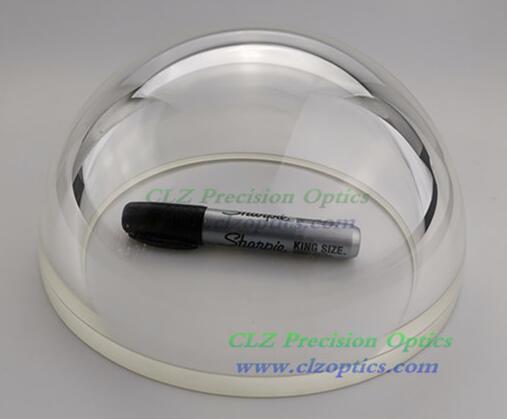Tips and Techniques for Cleaning Optics
Dec. 29, 2021
Ideally, your optics are kept pristine and no cleaning is necessary-- but the reality is that almost all optics will require cleaning at some point. Optics are like pets, when it comes to maintenance: each one has its own unique characteristics and issues. The first step is to ensure you have a clean, contaminant free work surface such as a tray or hard surface table. Next, use only clean, powder-free gloves or finger cots. Always handle optics by the edges to avoid contaminating or damaging the lens surface.

Not all coatings are the same, so if you are not certain of the durability of your optic, it is always best to begin with trying to blow off any debris using filtered dry air or nitrogen. A word of caution: canned or industrial gases can be contaminated with lubricating oils, so filtering is critical to avoid adding more contamination to your part.
After removing any particulate contaminants, it is time to remove other contamination, such as fingerprints. This will require a cleaning liquid-- the preferred ones are reagent grade Methanol or Isopropyl Alcohol. Acetone can be cautiously used for tough cleaning situations, but it can react with optical adhesives used in doublets, etc., and some mechanical mounting adhesives as well. It should be noted that fingerprint acids and oils, if left on the optical surface, can etch into softer coating materials, potentially rendering them unusable.
The best initial cleaning method is sometimes referred to as the drag method. With this method, a clean lens cleaning tissue is first carefully laid on the lens surface. Then the cleaning liquid is sparingly applied to barely wet the entire lens surface contacted by the lens tissue. The lens tissue is then held along one of the edges and dragged along the optic surface without any additional pressure. As the dry portion of the lens tissue follows the moistened portion across the lens surface, it will draw in any excess liquid. This sounds easy, but some practice is needed to get the process just right and yield a clean surface. In general, a dry lens tissue should never be used to clean a lens, as it can scratch the optic surface. With practice-- preferably on scrap lenses-- an experienced technician will be able to control the pressure finely enough to use a folded dry tissue to finish the cleaning process. A high-quality lens tissue should be used to avoid leeching out of oils and other chemicals found in lesser quality tissues. Unless your tissue packaging is clearly labeled for use with optics, it is best to not use it.
The next widely used method utilizes a high-quality lens tissue, folded, possibly multiple times, to achieve a contact patch with the lens surface appropriate to the size of optic and operator fingertip. Too small and your fingertip (hopefully encased in a finger cot or glove) will contact the optical surface and potentially ruin your hard work. Too big and it could scratch or re-contaminate other areas of the lens. Once the lens tissue is folded, apply enough cleaning liquid to wet the folded area of the tissue. Start by cleaning the perimeter of the optic so that any debris which may have accumulated there is removed (especially true for lens elements in a housing).
Once the perimeter is cleaned, get a new piece of lens tissue and again fold and moisten it; then, starting one side of the lens, gently drag the folded portion across with light pressure applied by your fingertip. Any aggressive cleaning should be left to an experienced technician as the risk of damage is high. ALWAYS drag in one direction, do not scrub back and forth, and do not be afraid of frequently changing to a new piece of high-quality lens tissue.
The best way to keep an optic clean is to keep contamination from reaching it!




















